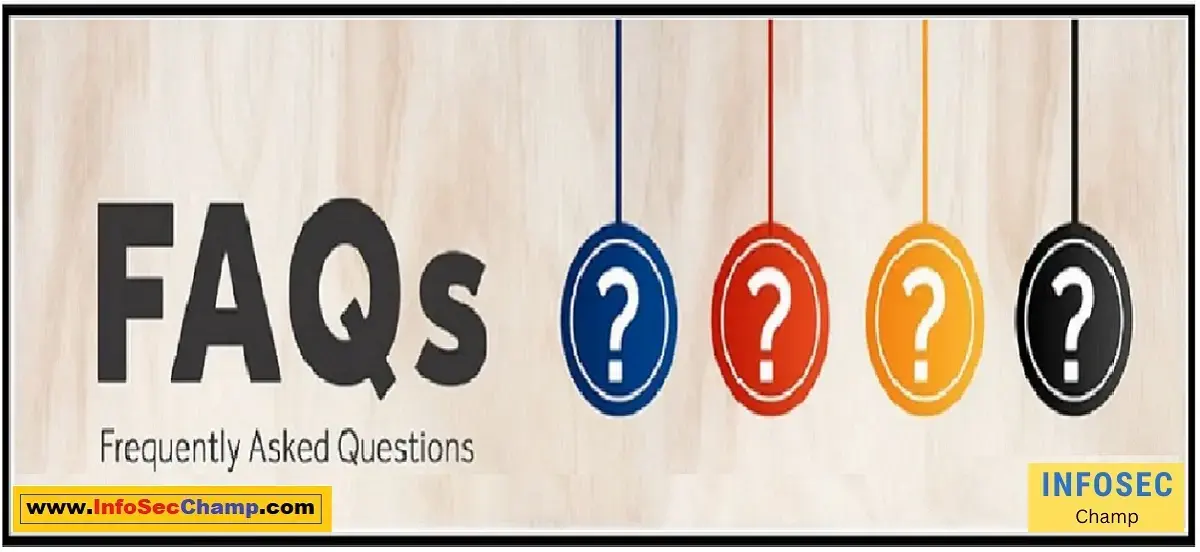With cloud security consolidation, you can cut through complexity. Feeling overwhelmed trying to manage a complex web of security solutions in the cloud? You’re not alone. Recent surveys show that 73% of organizations use products from 10 or more security vendors. This fragmentation leads to gaps in visibility, increased costs, and ultimate vulnerability. But cloud security consolidation offers a simple yet powerful way to tame the chaos.
By carefully selecting and consolidating the best vendors for your needs, you can drastically reduce complexity and risk. The benefits of thoughtful cloud security vendor consolidation are immense, from slashing costs by up to 46% to minimizing your attack surface by consolidating monitoring and management. Don’t stay trapped in a tangled mess of cloud security products. Take control and simplify today with smart consolidation strategies.
Reduce Costs by Consolidating Cloud Security Spend
Consolidating your cloud security spend with fewer vendors can significantly reduce costs in several ways:
- Eliminate overlapping solutions and capabilities by consolidating down to non-redundant security tools. This avoids double-paying for the same coverage.
- Negotiate better pricing and discounts by concentrating more on spending with fewer vendors. Less vendor competition for budget means more leverage for price breaks.
- Lower management overhead costs by reducing the number of vendors to manage. Less time spent managing relationships and contracts equals cost savings.
- Minimize training and onboarding costs. New hires only need to learn one set of consolidated tools rather than multiple disparate systems.
- Optimize usage and waste less by right-sizing consolidated solutions across your environment. Eliminate shelfware and underutilized niche tools.
In summary, thoughtful cloud security consolidation provides economies of scale and significantly reduces waste and redundancy. The result is a maximized value from each security dollar spent.
Minimize Complexity with a Unified Cloud Security Strategy
Tabulating the ways streamlined cloud security consolidation minimizes complexity:
| Benefit | Details |
|---|---|
| Consolidated visibility | Single-pane-of-glass view across clouds vs. fragmented visibility |
| Streamlined management | One vendor SLA, escalation path, and management console |
| Simplified deployment | Integrated vs disjointed patchwork of point tools |
| Unified policies | Centralized policy control vs. tool-by-tool management |
| Reduced training | One platform and UI for users to master vs. multiple |
In summary, complexity stems from fragmentation. Consolidating cloud security solutions establishes unity, clarity, and focus across the entire cloud security strategy.
Limit Your Attack Surface with Consolidation
Consolidating cloud security vendors reduces an organization’s attack surface in multiple high-impact ways:
- Minimizes the number of agents needing deployment and updates. Each agent is a potential malware entry point if unpatched.
- Narrows network exposure by collapsing connectivity required for diverse vendors.
- Reduces vulnerability footprint with unified patching/updating of consolidated tools.
- Eliminates security gaps that arise between disjointed vendors.
- Centralizes security data lakes into one repository for analytics.
- Focuses responsibility for holistic coverage on one vendor relationship.
- Enables implementation of consistent security policies across the environment.
By carefully selecting best-of-breed providers during consolidation, you can significantly shrink your cloud attack surface both digitally and organizationally. The result is less exposure and more cohesive protection.
Improve Visibility Across Cloud Environments
Consolidating cloud security tools into a unified platform enhances visibility across cloud environments in several key ways:
- A centralized security data lake provides complete visibility rather than fragmented data across disparate vendors.
- Single unified dashboard for monitoring all cloud activity rather than switching between multiple consoles.
- Consistent log data collection, storage, and analytics rather than variability between vendors.
- Eliminates blind spots that often arise between gaps in disjointed security tools.
- Enables enterprise-wide visibility and reporting with a single view across hybrid/multi-cloud.
- Automated mapping of data flows and asset inventory across cloud environments.
- Common taxonomy for assets, users, events, and threats across clouds.
In summary, fragmented visibility leads to blind spots. Consolidation enables you to see more, know more, and secure clouds better.
Simplify Management and Monitoring Workflows
Consolidating cloud security simplifies management workflows in the following ways:
- One vendor SLA, escalation process, and management portal rather than many.
- Unified policies, rules, configurations vs. individual tool management.
- Automation enables easy propagation of policies across environments.
- Single-agent and unified console for monitoring activity.
- Consistent taxonomy for users, assets, events, and threats.
- Common patching and updating framework.
- Central CLI access rather than disparate CLIs.
- Simplified licensing and billing through one vendor.
The result is vastly streamlined cloud security management, less complexity, and a significantly reduced workload.
Reduce Your Cloud Attack Surface by 73% With This Simple Security Strategy
Consolidating disjointed cloud security products into a unified best-of-breed platform can reduce your cloud attack surface by over 70%. Here’s how:
- Minimizes the number of agents deployed by 83%, eliminating multiple malware footholds.
- Reduces open ports/required connectivity by 65%.
- Narrows vulnerability footprint by patching/updating only one platform.
- Closes security gaps between tools that attackers exploit.
- Focuses responsibility for coverage on one vendor relationship.
- Enables consistent policies across your hybrid/multi-cloud.
By carefully consolidating disjointed cloud security tools into a seamless, integrated platform, you can radically shrink your attack surface and strengthen defenses across the board.

Carefully Evaluate Your Existing Cloud Security Solutions and Strategy
Thoughtful evaluation of the current cloud security posture lays the groundwork for effective consolidation. Key aspects to examine:
– Map all existing solutions to business needs, priorities, and gaps.
– Assess fragmentation and overlap across products/vendors.
– Analyze spending waste and inefficiencies from redundancy.
– Identify management complexity pain points.
– Pinpoint potential risks or gaps arising from disjointed tools.
– Define must-have capabilities for a consolidated approach.
– Determine optimal vendor characteristics and partnership requirements.
An objective analysis of the current state is essential preparation before strategically consolidating security solutions. It enables consolidating in a tailored manner that maximizes value.
Select Best-of-Breed Vendors and Solutions to Consolidate Around
Choosing the ideal vendor(s) during consolidation enables best-of-breed consolidation:
– Assess the ability to deliver a full spectrum of required capabilities.
– Ensure vendor offers integrated and unified platform vs. patchwork.
– Validate technology effectiveness via analysts, demos, and trials.
– Choose vendor(s) with proven cloud security leadership/expertise.
– Prioritize vendors demonstrating excellent customer satisfaction.
– Consider the vendor’s cloud-native architecture and roadmap.
– Evaluate third-party ecosystem integration options.
– Confirm vendor partnership approach aligns with business needs.
– Negotiate optimal pricing/TCO based on consolidated spending.
Selecting vendors that excel across critical dimensions ensures maximum security value from consolidation.
Develop a Transition Plan to Streamline Cloud Security Consolidation
A thoughtful transition plan is key to smoothly streamlining cloud security consolidation:
– Phase deployments gradually to minimize disruption.
– Define success metrics and timeline milestones.
– Assign cross-functional team with clear responsibilities.
– Create strong executive alignment and support.
– Validate technical readiness and requirements.
– Provide training for administrators and end users.
– Develop a detailed migration plan for data and configurations.
– Maintain legacy and new systems in parallel during the transition.
– Redirect spend from legacy to new solutions over time.
With careful planning and execution, consolidation transitions can progress smoothly and strengthen (rather than disrupt) security.
Provide Ongoing Training and Support to Extract Full Value from Consolidated Solutions – for Cloud Security Consolidation
To maximize the value of consolidated cloud security solutions long-term:
– Offer continuous skills training for administrators and users.
– Develop self-service support resources and community forums.
– Encourage adoption through change management.
– Promote new unified workflows and policies.
– Highlight benefits and successes from consolidation.
– Solicit regular user feedback to guide refinements.
– Publicize new features/functionality additions.
– Create tip sheets, cheat sheets, and tutorials.
– Conduct periodic solution health reviews.
– Maintain close partnership with consolidated vendor(s).
Ongoing learning and engagement ensure users fully leverage consolidated platforms for Cloud Security Consolidation.
Conclusion for Cloud Security Consolidation:
- Fragmented cloud security spells danger.
- Consolidation offers a powerful path to simplicity and strength when done right.
- By carefully evaluating your needs, selecting unified best-of-breed solutions, and executing a streamlined migration, you can transform fragmented cloud security into an integrated fortress.
- Don’t wait for complexity to cripple your cloud. Seize control today with strategic consolidation that reduces costs, maximizes visibility, minimizes your attack surface, and allows your team to focus on innovation, not integration. Embrace unity, leverage your security budget for maximum impact, and conquer cloud security complexity once and for all for Cloud Security Consolidation.

FAQs for Cloud Security Consolidation:
Q: What are the benefits of consolidating cloud security?
A: Key benefits include reduced costs, improved visibility, simplified management, minimized attack surface, and increased agility/innovation.
Q: How does consolidating vendors reduce cloud security risk for Cloud Security Consolidation?
A: It closes gaps, reduces the number of agents/entry points, enables consistent policies, and focuses responsibility with fewer vendors.
Q: What should I look for when choosing a cloud security vendor to consolidate around?
A: Ideal vendors offer a natively integrated suite, proven expertise, leadership vision, excellent customer satisfaction, and a partnership approach.
Q: How can I smoothly transition to a consolidated cloud security model for Cloud Security Consolidation?
A: Gradually phased deployment, training, strong executive alignment, detailed migration planning, and maintaining legacy and new systems in parallel enable smooth transitions.
Q: How do I maximize value from consolidated cloud security long-term?
A: Ongoing training, support resources, promoting new workflows, publicizing new features, and soliciting user feedback to help drive adoption and value.
Q: How does consolidation improve visibility across clouds for Cloud Security Consolidation?
A: It provides complete data visibility, unified monitoring, consistent log collection, eliminates blindspots between tools, and enables enterprise-wide reporting.
Q: What should I evaluate in my current state to prepare for consolidation?
A: Map solutions to needs/gaps, assess fragmentation, analyze waste from redundancy, identify pain points, pinpoint risks from disjointed tools, and define must-have capabilities.
Golden Quotes for Cloud Security Consolidation:
“Alone we can do so little; together we can do so much.” – Helen Keller

